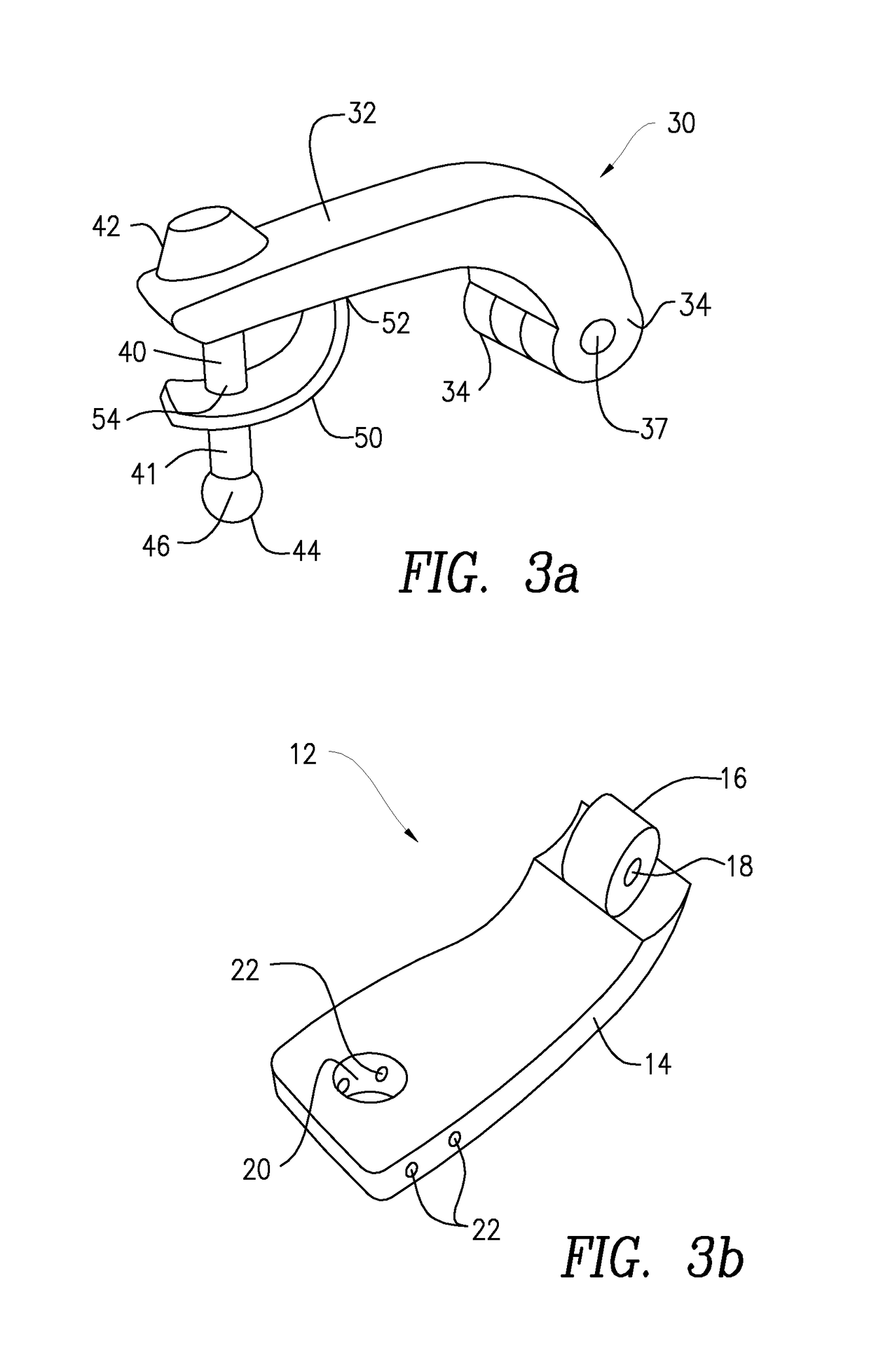Closure mechanism for jewelry
- Summary
- Abstract
- Description
- Claims
- Application Information
AI Technical Summary
Benefits of technology
Problems solved by technology
Method used
Image
Examples
Embodiment Construction
[0018]With initial reference to FIGS. 1, 3a and 3b, the primary components of the overall jewelry clasp 10 include a base arm 12, a swinging upper arm 30, both hingedly interconnected at one side thereof by a hinge 36. The opposed distal ends of the base arm 12 and the upper arm 30 are closeable by a locking mechanism 40.
[0019]A glance at FIG. 5 enables appreciating one mode of use of the jewelry clasp 10, in which a chain or a bracelet component 80 can be easily placed between the closeable arms of the jewelry clasp and locked therein. In addition, the jewelry clasp 10 can permanently (or removeably) hold a jewelry charm 70 that has a ring 72 that is secured by the locking pin 41.
[0020]More specifically, as can be seen in the disassembled drawings in FIGS. 3a, 3b and 3c, the base arm 12 comprises a body 14, curved on the outside toward the hinge 36 and provided with a cylindrically shaped hinge piece 16 with a bolt hole 18. A through-going opening 20 at the distal end of the base a...
PUM
 Login to View More
Login to View More Abstract
Description
Claims
Application Information
 Login to View More
Login to View More - R&D
- Intellectual Property
- Life Sciences
- Materials
- Tech Scout
- Unparalleled Data Quality
- Higher Quality Content
- 60% Fewer Hallucinations
Browse by: Latest US Patents, China's latest patents, Technical Efficacy Thesaurus, Application Domain, Technology Topic, Popular Technical Reports.
© 2025 PatSnap. All rights reserved.Legal|Privacy policy|Modern Slavery Act Transparency Statement|Sitemap|About US| Contact US: help@patsnap.com



